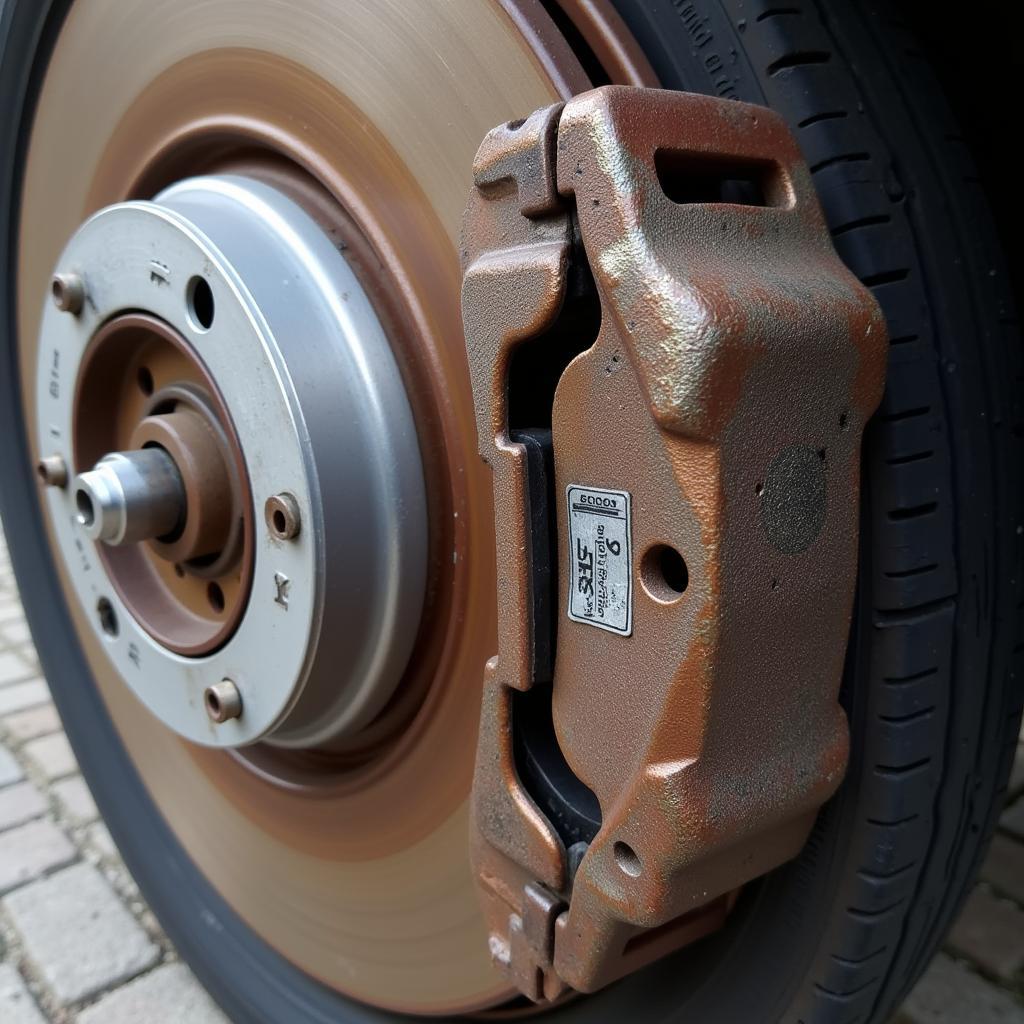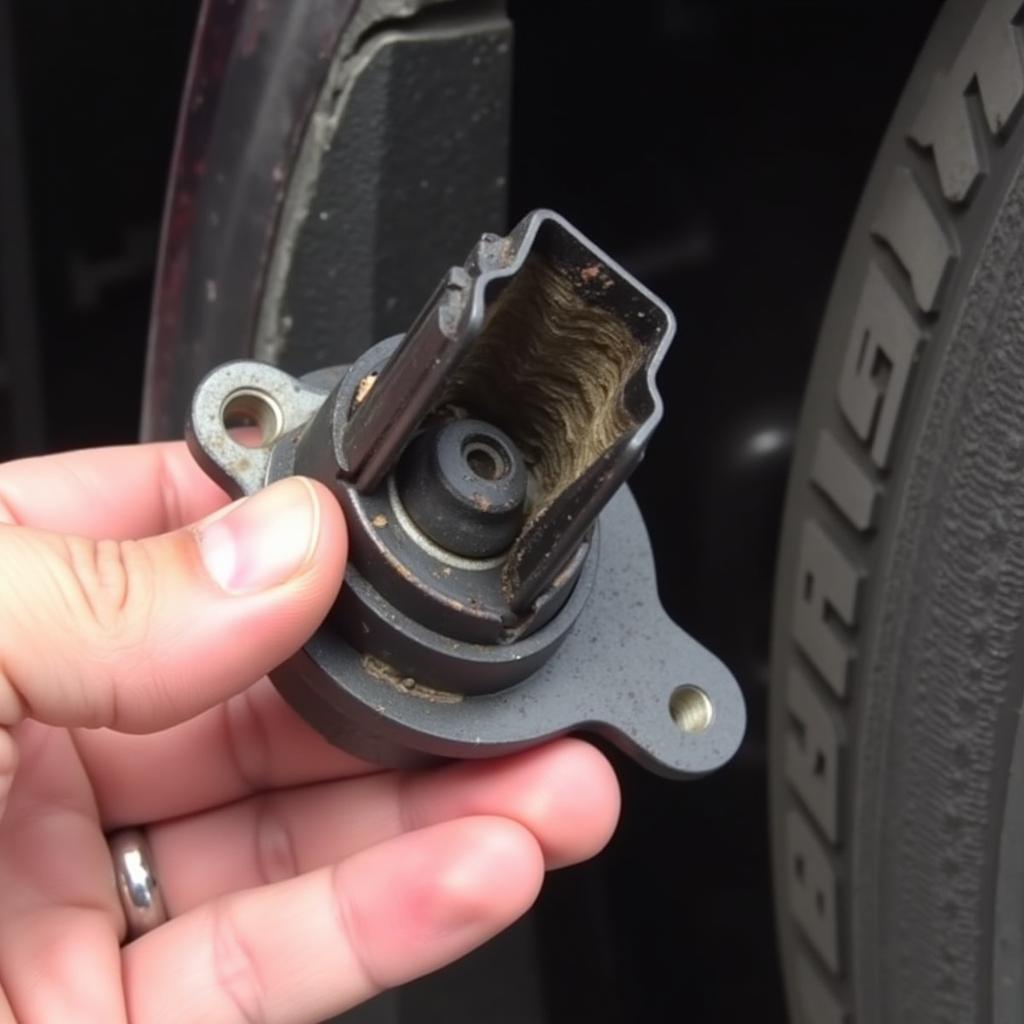The EPC warning light, short for Electronic Power Control, illuminating on your Seat Ibiza’s dashboard can be a cause for concern. This light indicates a problem within the vehicle’s electronic throttle control system, which manages essential engine functions like fuel delivery, air intake, and ignition timing. Ignoring this warning could lead to reduced engine performance, increased emissions, or even a complete engine shutdown.
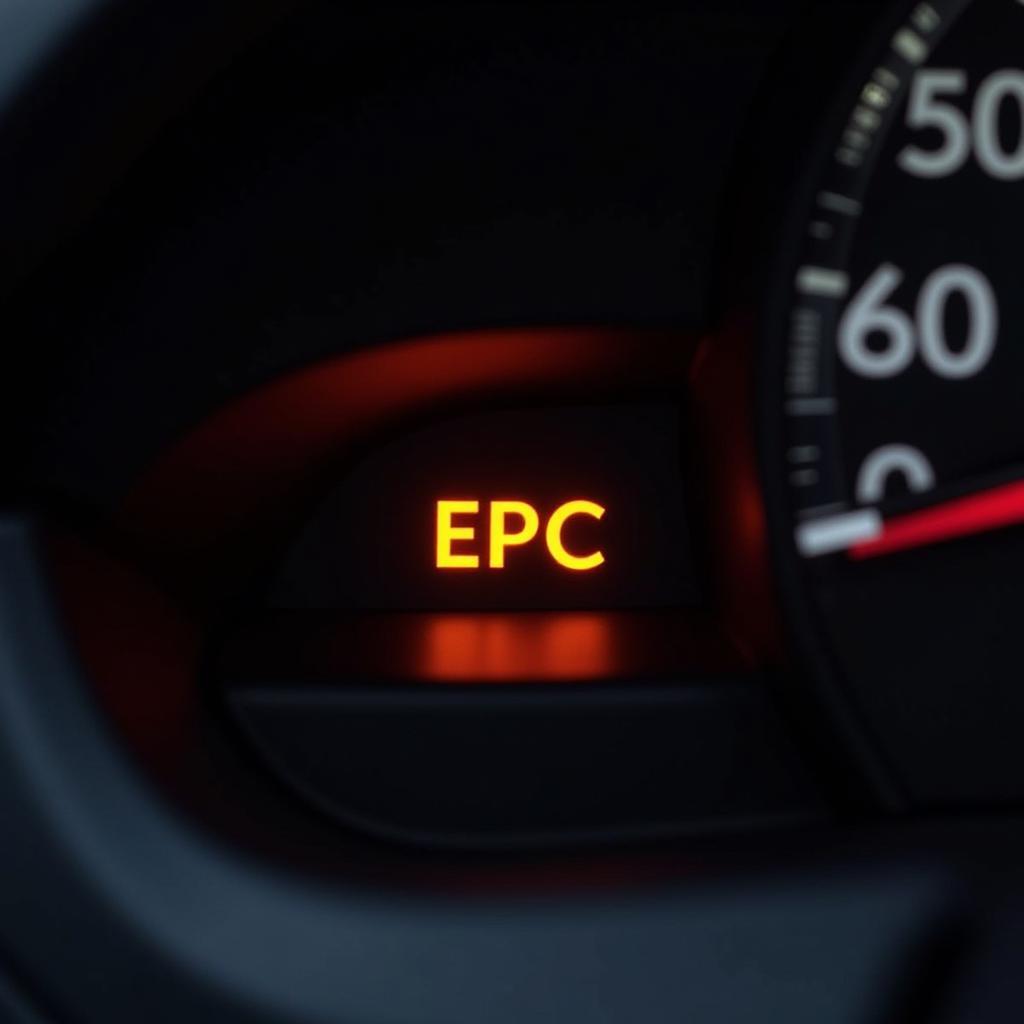 EPC warning light on a Seat Ibiza dashboard
EPC warning light on a Seat Ibiza dashboard
Understanding the EPC System and its Importance
The EPC system is a critical component of modern vehicles, responsible for ensuring optimal engine performance and fuel efficiency. It acts as the interface between the accelerator pedal and the throttle body, electronically controlling the amount of air entering the engine. This system replaces the traditional mechanical linkage found in older vehicles, offering greater precision and responsiveness.
When you press the accelerator pedal, a sensor sends a signal to the engine control unit (ECU), which then instructs the throttle body to open or close accordingly. This precise control of airflow helps optimize combustion, resulting in smoother acceleration, reduced emissions, and improved fuel economy.
Common Causes of the EPC Warning Light on Seat Ibiza
Several factors can trigger the EPC warning light in your Seat Ibiza. These range from minor sensor malfunctions to more serious issues with the throttle body or ECU. Here are some of the most common culprits:
- Faulty Throttle Position Sensor: This sensor relays the position of the throttle plate to the ECU. A malfunctioning sensor can send inaccurate readings, disrupting the air-fuel mixture.
- Malfunctioning Mass Air Flow (MAF) Sensor: The MAF sensor measures the volume of air entering the engine, allowing the ECU to calculate the appropriate fuel delivery. A faulty MAF sensor can lead to an imbalanced air-fuel mixture, triggering the EPC light.
- Issues with the Throttle Body: The throttle body itself can become clogged with dirt and debris, restricting airflow and triggering the warning light. In some cases, the throttle body motor may fail, requiring replacement.
- Vacuum Leaks: Any leaks in the intake manifold or vacuum hoses can disrupt the air pressure readings, leading to an incorrect air-fuel mixture and illuminating the EPC light.
- Faulty Brake Light Switch: In some vehicles, a faulty brake light switch can interfere with the throttle control system, causing the EPC light to illuminate.
- ECU Problems: While less common, issues with the engine control unit, such as software glitches or faulty wiring, can also trigger the EPC warning light.
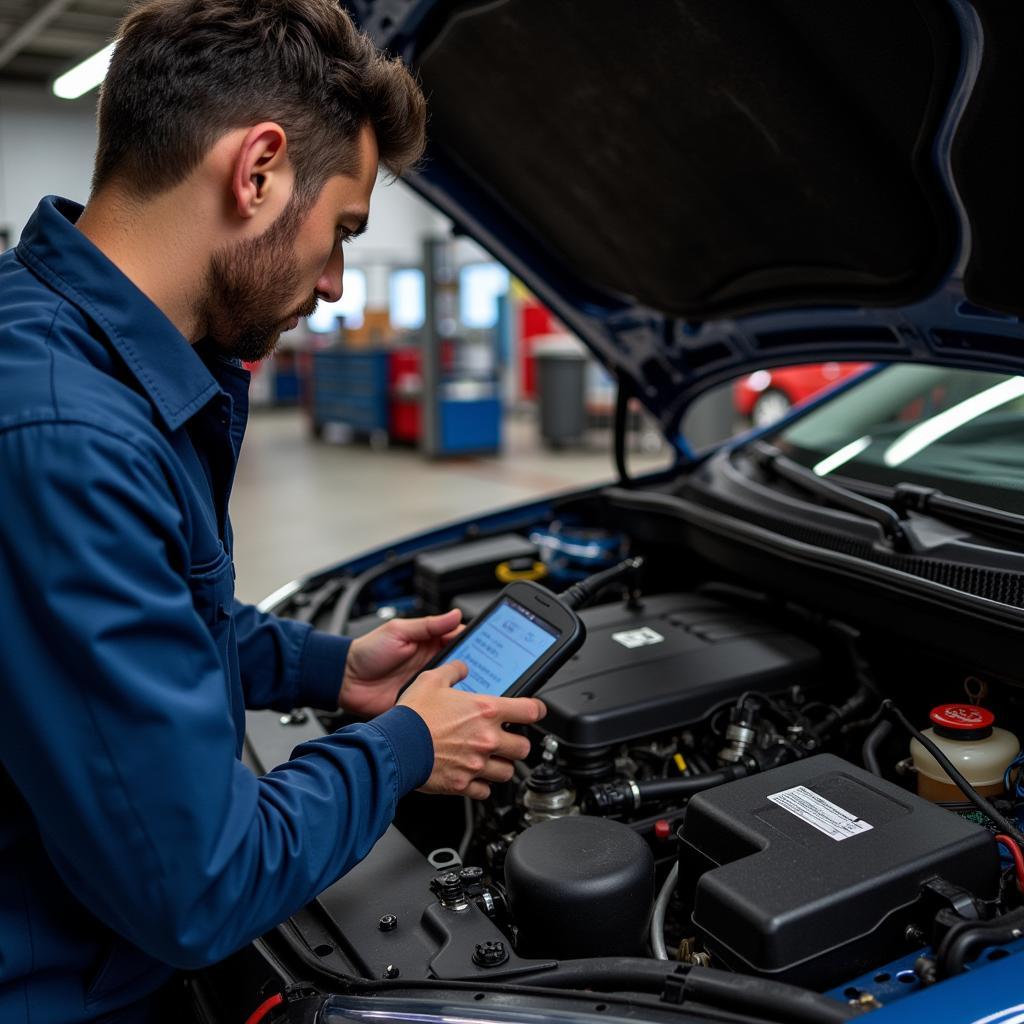 Mechanic inspecting the engine bay of a Seat Ibiza for EPC warning light causes
Mechanic inspecting the engine bay of a Seat Ibiza for EPC warning light causes
What to Do When the EPC Warning Light Comes On
Seeing the EPC warning light illuminated on your dashboard can be alarming, but it’s crucial to remain calm and take the following steps:
- Reduce Speed and Assess Engine Performance: If the light comes on while driving, safely pull over and assess the engine’s performance. Are there any unusual noises, vibrations, or loss of power?
- Check Other Warning Lights: Take note of any other illuminated warning lights on your dashboard, as they might provide additional clues about the underlying issue.
- Consult Your Seat Ibiza Owner’s Manual: Your owner’s manual can offer valuable information specific to your model year and engine type, including potential causes of the EPC light and recommended actions.
- Seek Professional Diagnosis: It’s highly recommended to have your vehicle diagnosed by a qualified mechanic, especially if you experience significant performance issues or are unsure about interpreting the warning signs.
Diagnosing and Fixing the EPC Warning Light
Diagnosing the EPC warning light typically involves connecting a specialized diagnostic scanner to your Seat Ibiza’s onboard diagnostic port (OBD-II). This scanner reads the error codes stored in the ECU, pinpointing the specific area of the electronic throttle control system experiencing issues.
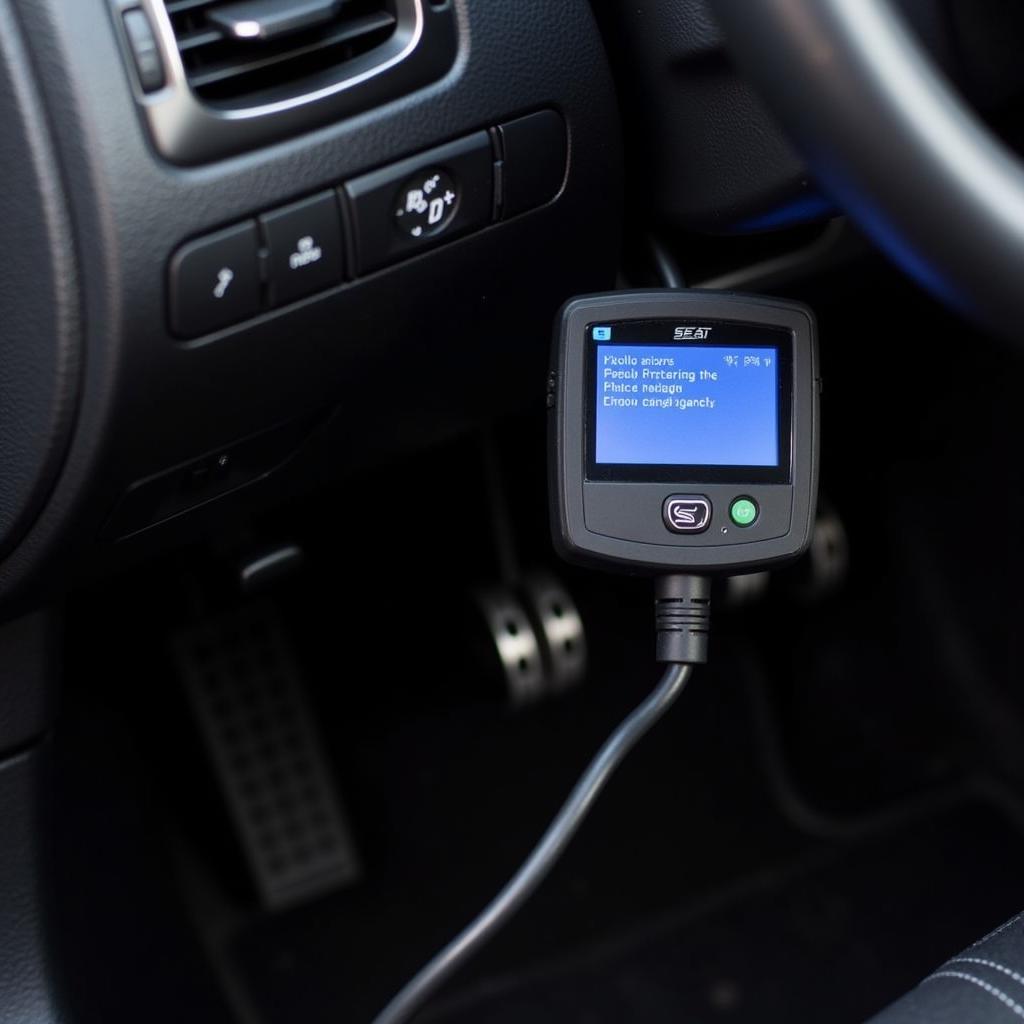 Diagnostic scanner connected to a car's OBD-II port
Diagnostic scanner connected to a car's OBD-II port
Based on the retrieved error codes, a mechanic can then perform further inspections and tests to pinpoint the root cause of the problem. Depending on the diagnosis, repairs might involve:
- Replacing Faulty Sensors: This could include the throttle position sensor, mass air flow sensor, or other related sensors.
- Cleaning or Replacing the Throttle Body: If the throttle body is clogged, a thorough cleaning might resolve the issue. However, a faulty throttle body motor usually requires replacement.
- Repairing Vacuum Leaks: Mechanics can identify and repair any leaks in the intake manifold or vacuum hoses, ensuring proper air pressure readings.
- Addressing Brake Light Switch Issues: Replacing a faulty brake light switch can sometimes resolve EPC warning light issues related to this component.
- Updating or Repairing the ECU: In rare cases, the ECU might require a software update or repair to address the underlying problem.
Preventative Measures to Avoid Future EPC Warning Light Issues
While not all EPC warning light triggers are preventable, regular maintenance can significantly reduce the risk of encountering this issue:
- Regular Engine Tune-Ups: Adhering to your Seat Ibiza’s recommended maintenance schedule for engine tune-ups, including spark plug replacements, air filter changes, and fuel system cleaning, can prevent issues that might trigger the EPC light.
- Inspect and Clean the Throttle Body: Periodically cleaning the throttle body can prevent dirt and debris buildup, ensuring smooth airflow and optimal engine performance.
- Address Warning Lights Promptly: Ignoring any warning lights, even seemingly minor ones, can lead to more significant problems down the line. Address them promptly to prevent potential issues from escalating.
Conclusion
The EPC warning light on your Seat Ibiza should never be ignored. While it might seem daunting, understanding the potential causes and taking prompt action can help you resolve the issue swiftly and prevent further damage to your vehicle. By following the recommended steps and seeking professional diagnosis when needed, you can ensure a smoother and safer driving experience. Remember, regular maintenance and timely attention to warning signs are crucial for keeping your Seat Ibiza running smoothly for miles to come.
For more information on warning lights and how to troubleshoot them, you can check out these resources:
- epc car warning light seat ibiza
- seat warning lights and what they mean
- dashboard warning lights seat ibiza
Remember, safety should always be your top priority. If you’re ever unsure about diagnosing or repairing your vehicle, don’t hesitate to seek help from a qualified professional.

